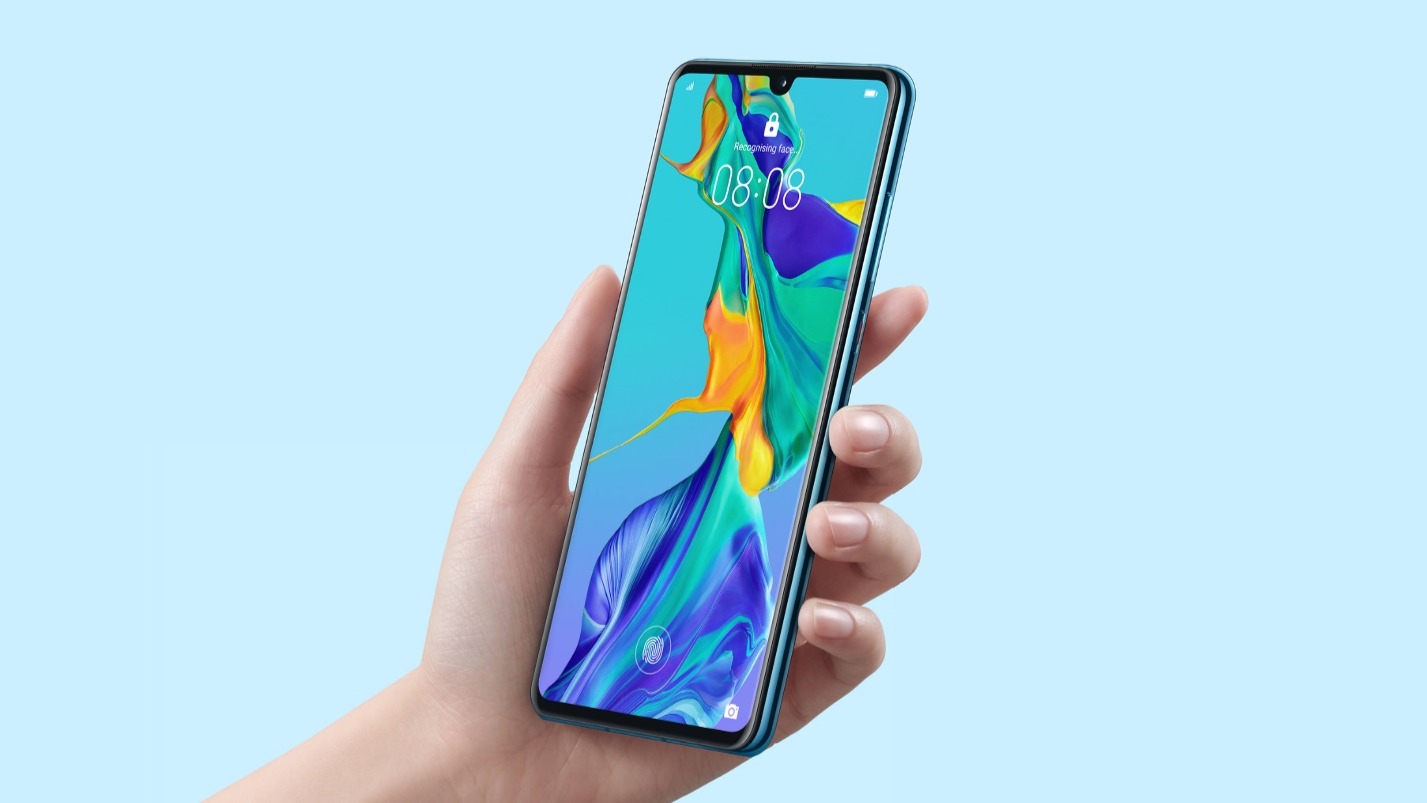Premium phones have advanced at an accelerated pace over the last couple of years, with many flagship handsets adopting the kinds of features that wouldn't seem out of place in a science fiction novel.
Wireless power sharing, in-display fingerprint scanners, encrypted Face-ID functionality, higher-end OLED displays, advanced multi-camera setups (some with as many as six sensors) and 5G network capability are all undoubtedly impressive features, but they've also helped to raise the cost of premium smartphones dramatically.
Apple's iPhone 11 Pro Max is a powerhouse device and one of the best phones you can buy in 2019, but a top-end model will set you back AU$2,499. For many, phones in this price range will be prohibitively expensive.
Thankfully, the rising cost of premium handsets has led to the creation of a category that can now be considered the new 'mid-range'. Even well-known manufacturers like Apple, Samsung and Google have started to offer terrific phones that boast a number of flagship-level features at a much more reasonable price point.
We've taken the liberty of rounding up some terrific handsets that fit within the new mid-range category, which we'd consider to be anywhere between AU$600 and AU$1,050. Here are the best mid-range phones in Australia for 2019.
- Best phones in Australia 2019
- Best cheap smartphones in Australia for 2019
- Best Android phones in Australia for 2019

For many Apple fans, the rising cost of the Cupertino company's premium iPhones has made it harder to justify upgrading on a regular basis. But what if there was a cheaper iPhone option that offered the same updated chipset as its more expensive siblings while dialling back on other extravagances?
Enter the iPhone XR – a more affordable Apple smartphone that's gotten even cheaper since the announcement of its successor, the iPhone 11. Sure, there are better models available now, but the iPhone XR still packs the same A12 Bionic chip that powers the exceptional iPhone XS and XS Max, which is pretty darn impressive for just over a thousand bucks.
Of course, there are a couple of downsides. For one, iPhone XR only sports a single camera on its rear, which is rare in this day and age. Thankfully, it still takes great photos and can even pull off impressive blurred backgrounds in Portrait mode.
Additionally, the iPhone XR sports a fairly low-res LCD display, rather than the beautiful OLED screen thats adorn higher-end iPhone models. It's still quite bright, and Apple's unmistakable notch design at least makes the display look quite modern when glanced at.
Still, if you can overlook those issues, the iPhone XR is a terrific option for those who want to remain in Apple's eco-system without spending an absolute fortune on top-end models.
Read our iPhone XR review
See the best iPhone XR outright deals here
See the best iPhone XR telco plans here

Google's Pixel 3 range is known for boasting fantastic cameras, and thankfully, that photographic prowess carries over to the much cheaper Pixel 3a XL. In terms of design, it even improves on the premium Pixel 3 XL in a couple of (albeit minor) ways.
For starters, the Pixel 3a XL lacks the enormous notch that's present on its flagship siblings. Instead, It's got a standard bezel along the top of the display that we think looks more elegant.
Speaking of the Pixel 3a XL's display, we were pleased to find that Google went for a beautiful Full HD+ OLED screen on the device, and while that is a lower resolution that the Quad HD+ sporting flagship models, the difference in quality is barely noticeable unless you're really looking for it.
You'll also find that unlike the Pixel 3 and 3XL, the 3a XL actually sports a 3.5mm headphone jack – a feature that's a real crowdpleaser but which doesn't get a lot of love from smartphone manufacturers these days.
Of course, Google did have to make some concessions in regards to the Google 3a XL's chipset, implementing a Snapdragon 670 processor in order to keep costs down. Thankfully, the handset still feels fast and responsive, which probably has a lot to do with the bloat-free stock version of Android 9 Pie that's installed on it out of the box.
Read our Google Pixel 3a XL review
See the best Google Pixel 3a XL outright deals here

With its beautful 6.7-inch Super AMOLED display and minimal teardrop notch, it would be easy to mistake the Samsung Galaxy A70 for a top-end phone at first glance. And, when you factor in flagship features like an in-display fingerprint scanner and a robust rear-mounted triple camera setup with ultra-wide lens, the distinction between mid-range and premium becomes even harder to detect.
Of course, its mid-range status does become more apparent as soon as you pick up the phone, if only because its plastic body feels lighter than its size would suggest.
Internally, it's got a Snapdragon 675 chipset running things, along with 8GB of RAM (double that of the Pixel 3a XL), granting it significantly more horsepower than Google's mid-ranger. It's also got an enormous 4,500mAh battery, which should last you well into the next day.
When it comes to the Galaxy A70's photographic capabilities, the device can be a bit of a mixed bag. The phone's triple-camera layout can be responsible for some terrific photos, particularly from its 32MP primary sensor.
That said, its ultra-wide sensor sports half the megapixels of the one featured in the flagship Galaxy S10, and the difference in quality is immediately apparent when looked at side-by-side.
But really, what can you expect from a smartphone that's roughly half the price of its premium cousin? The fact that it has an ultra-wide sensor at all is something to be celebrated, particularly at such an affordable price range.
On the flip side, Samsung has delivered a show-stopping 32MP front-facing camera, which may well be the feature that seals the deal for selfie-loving users.
Read our Samsung Galaxy A70 hands on review
See the best Samsung Galaxy A70 outright deals here
See the best Samsung Galaxy A70 plans here

Even taking Huawei's recent troubles with US trade bans into account, the P30 is still an absolutely fantastic phone and may very well be the last smartphone the Chinese phone maker releases with access to Googles apps and services... for some time at least.
Still considered a flagship phone, the Huawei P30's price has come down to the point where it now sits alongside the other upper mid-range devices on this list, making it a real steal for those who don't mind the possibility of being limited to Android 9 for the remainder of the phone's lifetime (an Android 10 update was rumoured in September, but it's release is as yet unconfirmed).
It's rear snapper is a Leica-powered triple camera 40MP (main) + 16MP (ultra-wide) + 8MP (telephoto) setup which is capable of absolutely breathtaking photography. We're also big fans of the phone's 3.5mm headphone jack (a rarity in this day and age) and in-display fingerprint scanner.
Additionally, the device boasts a gorgeous 6.1-inch 1080p OLED display and sizeable 3,650mAh battery, which should get you through a day and a half of usage with no problems. If you can overlook Huawei's current troubles, the P30 is more than up to the task of carrying out your daily needs.
Read our Huawei P30 review
See the best Huawei P30 outright deals here
See the best Huawei P30 plans here

If you're after an impressive smartphone that offers flagship specs at a mid-range price, you can't go past the stunning Xiaomi Mi 9T Pro, which we recently awarded 4 and half stars in its review.
When it comes to design, display and power, the Mi 9T Pro has it all – and yes that does mean it has a headphone jack. Flagship features include a truly bezel-free 6.39-inch Super AMOLED display, which Xiaomi has achieved by employing a nifty 20MP pop-up selfie camera and an in-display fingerprint scanner. And there's a massive 4,000mAh battery to keep that display running for a long time.
Speaking of cameras, the Mi 9T Pro definitely delivers the goods in terms of photographic capability, sporting a triple-lens setup that boasts 48MP (main) + 8MP (telephoto) + 13MP (ultra-wide) sensors.
Best of all, it's powered by the latest Snapdragon 855 processor – the very same one that powers premium handsets like the Samsung Galaxy Note 10. Given that the Xiaomi Mi 9T Pro is less than half the price of Samsung's flagship, that's a remarkable achievement.
Of course, Xiaomi's Mi 9T Pro isn't entirely flawless – it's not waterproof, it's only got a mono speaker and its user interface won't be everyone's cup of tea, but if you're after a powerhouse device at a fraction of the price, you probably won't find a better option in Australia.
Read our Xiaomi Mi 9T Pro review
See the best Xiaomi Mi 9T Pro outright deals here
- Check out how these mid-range handsets compare to our overall top Aussie smartphone picks
from TechRadar: Photography & video capture news https://ift.tt/2pfdb6z
via IFTTT






0 kommenttia:
Lähetä kommentti